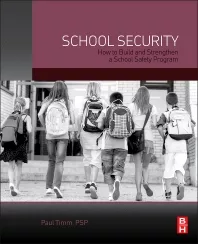How the NIST Cybersecurity Framework 2.0 helps protect businesses

Image via Unsplash
Earlier this year, the U.S. National Institute of Standards and Technology (NIST) released version 2.0 of its Cybersecurity Framework or “CSF.” The NIST CSF has been pivotal in helping medium-sized organizations navigate the increasingly complex cybersecurity landscape. For those enterprises that are too large to be called “small” yet often struggle to find the budget and internal IT security resources available to large enterprises, the CSF offers a robust cyber defense mechanism for safeguarding any organization.
Understanding NIST’s connection to businesses
As a government agency within the U.S. Department of Commerce with over a century of history, NIST has been instrumental in the advancement of technology and cybersecurity standards for decades. Its contribution to cybersecurity, through the development of frameworks and guidelines since the early 2000s, helps organizations of all sizes to protect their information and infrastructure from digital threats.
The evolution of the NIST Cybersecurity Framework (CSF)
Originally released in 2014 with version 1.0, the CSF provided organizations with a comprehensive structure for assessing and improving cybersecurity postures from the cloud down to the edge. With the release of version 1.1 in 2018, the NIST CSF became one of the de facto cybersecurity risk frameworks in the US.. and beyond. Designed to be adaptable to sectors and organizations of all sizes and types, security professionals use the framework to build more robust security practices and to provide a common language for understanding, managing, and expressing cybersecurity risk for a range of business professionals from the C-suite to the frontline IT security managers.
The transition from version 1.1 to 2.0 signifies a leap forward for the CSF, as NIST incorporated real-world feedback and adapted the framework to the ever-evolving cyber threat landscape. For both the CISO and the IT professionals managing cybersecurity for today’s distributed workforce, the release of version 2.0 delivers updated guidelines that reflect the latest in cybersecurity best practices.
What is the NIST CSF 2.0?
The NIST Cybersecurity Framework v2.0 provides guidance for managing risks in all industry verticals of any size, including government and academia. It identifies an organization’s current baseline, deficiencies and priorities to improve its security posture. The framework is not prescriptive, but rather, it helps users learn more about selecting specific outcomes for reducing cybersecurity risks and efficiently strengthening cyber defenses.
Business benefits delivered by CSF 2.0
There are several key benefits that the NIST CSF 2.0 can provide businesses.
- Governance: Determines if the organization’s cybersecurity risk management strategy, expectations, and policies are properly established, communicated, and monitored. This includes codifying the entity’s specific cybersecurity risk profile, risk management strategies and supply-chain risks.
- Identification: Involves developing a thorough mapping of an organization’s business processes, systems, assets, threats and vulnerabilities to their respective assets and data along with how data securely flows between each.
- Protection: Protection strategies are designed to safeguard infrastructure and sensitive information from cyber threats. This includes investing in the right tools and technologies to ensure operations can withstand an attack and data is protected. A good protection strategy secures both physical and digital assets along with implementing training programs that empower employees to recognize and prevent cybersecurity incidents.
- Detection: The capability to quickly identify cybersecurity events and provide timely analysis is critical. For most businesses, focusing on detection means ensuring systems are in place to promptly spot anomalies that could indicate a cybersecurity threat, thus minimizing potential damage.
- Response: In the event of a cybersecurity incident, an organized approach to response is vital. This includes the execution of the incident response plan, prompt escalation, collection of data to preserve integrity, and prompt communication and notification to key internal and external stakeholders. This function also involves proper actions for containing and mitigating damage from incidents.
- Recovery: In this final component of CSF 2.0, recovery focuses on restoring any services or capabilities that were impaired due to the incident. From an operational perspective, recovery is not just about restoring IT systems and applications quickly but also about business continuity — ensuring operations can continue executing business processes during a possible outage of the technical environment. Continuous improvement is imperative within this process to bolster future resilience.
CSF 2.0 now aligns with the 2023 National Cybersecurity Strategy which not only expands to the protection of all organizations in any sector, but also better organizes focus on governance. The goal of adding governance to CSF 2.0 is to elevate cybersecurity as a key consideration by top executives aligned with other initiatives such as critical infrastructure, financial stability and reputational integrity.
What this means for mid-sized enterprises is that CSF 2.0 is no longer merely a “nice-to-have”, but a business essential. These organizations face distinct cybersecurity challenges, often operating with more constrained resources than larger enterprises. The NIST Cybersecurity Framework’s scalable and adaptable nature allows for the effective safeguarding of digital assets, providing a pathway to robust cybersecurity without the necessity for large-scale budgets.
Building a CSF v2.0-compliant strategy
The NIST Cybersecurity Framework 2.0 is crucial for businesses aiming to enhance their cybersecurity posture. If an organization has built its cybersecurity strategy on prior NIST Cybersecurity Frameworks, it is logical — and necessary — to assess what’s required to ensure adherence to the new CSF 2.0 standard and secure its digital environment.
Looking for a reprint of this article?
From high-res PDFs to custom plaques, order your copy today!








